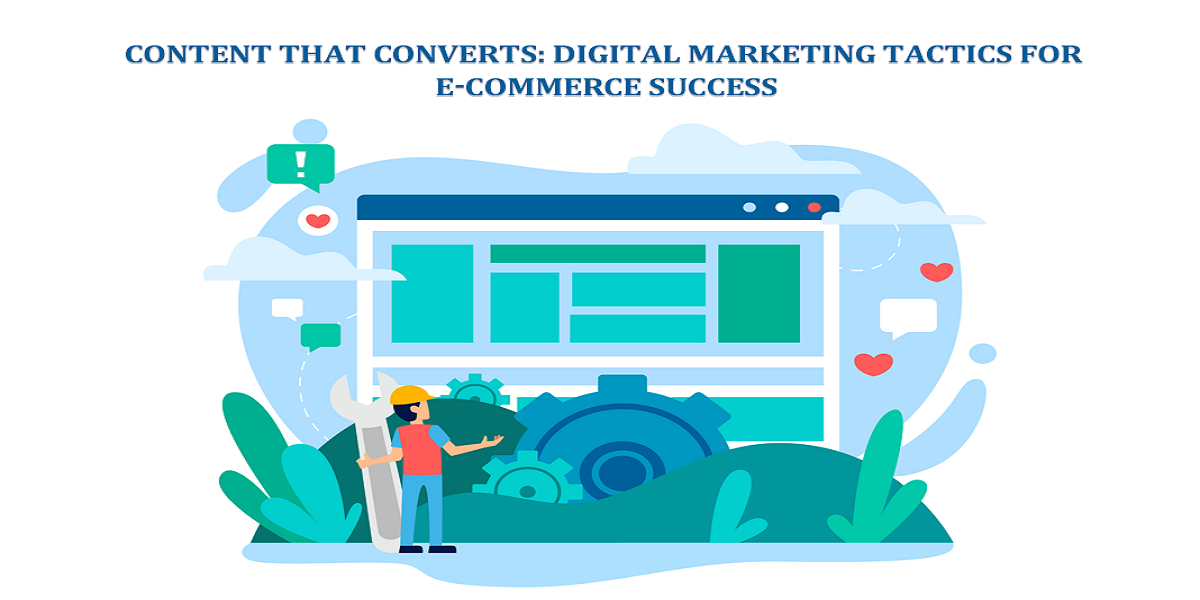
Top SEO Benefits of Building a Mobile-Friendly Website
- By Mayuri Bhoyar
- 01-10-2023
- SEO
In the digital world we live in, mobile devices are an important part of people's lives.
Besides communication, people use these devices to browse the internet, find information, and shop for products or services. In today's world, having a mobile-friendly website is not an option for businesses that want to succeed.
This article discusses mobile-friendly websites. It focuses on what they are, the SEO benefits they offer, and provides tips for building responding sites.
What is a Mobile-Friendly Website and Why Does it Matter?
Mobile-friendly websites are sites that have been optimized for mobile devices like tablets and smartphones. The images, layout, content, and videos on these sites automatically adjust to the different screen sizes, allowing users to view and navigate the sites flawlessly.
With 52% of online traffic flowing from mobile devices, businesses must optimize their sites to make them accessible to people who prefer to search the internet on the go. Responsive websites can improve page navigation and give your website an adaptive layout that fits varying screen sizes. All this gives users an optimal browsing experience, keeping bounce rates low and users engaged.
One of the most crucial digital marketing trends is to ensure that your website is Mobile friendly as it will boost to your search engine optimization (SEO) efforts. Search engines prioritize responsive websites in search results. With the growing emphasis on user experience, algorithms in search engines are rewarding responsive sites with higher rankings.
AI tools for business can be instrumental in optimizing web pages for SEO to boost your site's ranking on search results. High ranking can make your business more visible to potential customers and increase conversions for your business.
9 SEO Benefits of Mobile-Friendly Websites
Mobile-responsive websites offer various SEO benefits to companies. Below are the top 9 SEO benefits you could enjoy if you choose to develop a responsive website:
1. Fast-Loading Website
One of the most important SEO benefits of having a mobile-friendly website is fast opening speeds. Unlike desktop users, mobile users have little patience. Most people browse on the go, they don't want to wait for a website to open. Stats show that 53% of them will quit a page that does not load within three seconds.
With so many sites opening instantly, poor website performance can push users to your competitors' websites. They most likely will never return to your website in the future. Optimizing your website for mobile devices can make it load faster.
A website that opens fast offers users better usability and encourages them to stay on your web pages longer. This allows them to explore your offerings, which increases the likelihood of turning them into subscribers or paying customers. A fast-loading website also allows users to find what they need with less effort.
2. Search Engine Prioritization
Mobile-friendliness can support SEO efforts by prioritizing your website on search engines. Search engines are attracted to responsive websites. To make valuable content accessible to users, search engines are increasingly taking the mobile-first approach.
Search algorithms now consider mobile responsiveness and user-friendliness an important factor in ranking websites. This means websites that have adopted responsive designs and are optimized for mobile devices rank better on search results compared to those that don't.
3. Improved Site Usability
Search engines are keen on giving users better browsing experiences by ensuring that they get the content they want. Websites that focus on giving users positive experiences are likely to rank higher on search results than those that don't. Better usability also gives users positive experiences, which is an important factor in building a successful business.
Mobile-friendliness boosts website usability, which in turn gives users pleasant browsing experiences. With such experiences, users are likely to convert into leads, subscribers, and paying clients.
4. Boosting Backlinks
Link-building is at the heart of any SEO strategy. It's among the most important SEO benefits of building a mobile-friendly website. When you have a responsive website, backlinking can boost SEO by making your content visible and easier for people to find on all devices.
Stats show that high-ranking websites have 4 times more backlinks than those that don't. Search engines use backlinks to determine website authority and establish relevance to search queries. The more authoritative websites link back to your site, the higher it'll rank on search results.
While it's important to consider the quantity of backlinks, the focus should also be on quality.
Search engines view backlinks as references for the visitors, which is why websites that link users to high-quality content rank highly on search results.
Backlinks also drive referral traffic from other sites to your website and boost domain authority. Although search engines don't consider domain authority a ranking factor, SEO tools use it to compare your site with the competition. This pushes your website higher on search results.
5. Eliminating Duplicate Content
When you make mobile responsiveness a priority for your website, you start focusing on its content and overall user experience. However, it's so easy for web developers to build two versions- a desktop one and a mobile one during design. The result is duplicate content on different URLs.
Duplicate content undermines your SEO efforts because it confuses search engines. It makes it difficult for them to determine which content to rank on search results. If search engines prioritize the desktop version, mobile users will have a hard time accessing your website. This negative experience can push potential customers away.
Although designing a mobile-friendly site isn't the only way to prevent duplicate content, it keeps you from making this mistake. Best practices in responsive design emphasize the development of a single, responsive website version. Adhering to this practice ensures that your web content is available on a single URL.
This boosts SEO benefits for your company as search engines can crawl, organize, and index the content effectively. As a result, your visitors have positive experiences browsing the website.
6. More Social Shares
Mobile users frequently engage with content they like by sharing it with their circle of family and friends on social media. Social shares are a great way to get your content out to new audiences. A mobile-friendly website makes it easy for people to engage with your content and share it.
Responsive website developers prioritize social sharing capabilities during design. By placing easy-to-use share buttons in strategic sections of a website, they enable mobile users to share web content seamlessly. While social shares may not impact your site's search rankings, they help in expanding your online audience.
The more people share your content on social media, the more traffic they drive to your website. This can help you generate more leads and boost conversions for your business. Also, a strong social media presence offers additional SEO benefits that include increased brand awareness and visibility.
7. Voice Search Optimization
Another one of the different SEO benefits of building a mobile-friendly website optimizing web content for voice searches. Top AI tools for businesses like Siri, Alexa, and Google allow mobile users to conduct searches hands-free on the go.
Building a mobile-friendly website makes it easier to optimize web content for voice questions and search terms, boosting rankings on voice search results. This SEO technique allows companies to address frequent verbal queries by ensuring virtual assistants identify and place their pages in front of mobile users.
Voice search is an excellent way to drive traffic to your website, even if users don't scroll through search results. With proper implementation, voice assistants can make your brand visible to users who may choose to view your web pages.
8. Higher Mobile Conversion Rate
Among the many SEO benefits that a mobile-responsive site offers businesses is increased conversions. When people visit your website, you want to convert them into paying customers within the shortest time possible. Having a consistent user interface across all devices is critical to achieving this goal.
When people want to subscribe to a website or make a purchase, they don't want to be transferred to a device-specific site. The shift takes time and is frustrating for most people.
A mobile-friendly site ensures layouts, forms, and buttons render seamlessly on all screen sizes. This way, mobile users can fill out forms or click on call-to-actions and phone numbers without experiencing hitches. By giving mobile users a frictionless experience, companies can increase conversion rates and sales revenues.
9. Low Bounce Rates
When mobile users experience difficulties using your website, they can get frustrated and quit right away. When they quit the website without opening a second page, the action is known as a 'bounce'. Website bounce rates It gives site owners an idea of how well their website satisfies user searches.
High bounce rates could mean users struggle to navigate your website or are unable to find what they want. Poor website performance affects SEO significantly. Mobile-friendly web design addresses this challenge by fixing site performance issues like loading speeds, usability, and poor navigation.
This reduces site bounce rates, enabling companies to keep visitors on their sites longer in order to convert them into leads, subscribers, and clients.
Tips for Building Mobile-Friendly Websites
Building a mobile-friendly website requires expertise. If you're looking to create one for your business, here are 6 valuable tips to help you get the best results:
a. Make Webpages Touch-Friendly
Website icons should be big enough to allow visitors to use the touch option on mobile devices. Your web designer should have finger touches and mouse clicks when designing the website. Also, ensure the color palette and layout make your website icons conspicuous.
b. Apply Responsive Fonts
When designing a mobile-friendly website, you need to adjust font sizes in a way that makes text effective across mobile devices to enjoy SEO benefits. Designers use pixels when designing desktop websites. This doesn't work for mobile-friendly websites. For the latter, your designer must apply responsive fonts.
c. Trade Pixels for Fluid Grids
Unlike pixel sizes, fluid grids allow you to create scalable layouts that expand with your web pages. Using grids, you can size website items proportionally instead of confining them to one size the way pixels do. Grids are built on proportions, not percentages or pixels. This gives them an adaptive nature of fluid grids that makes it easy to resize icons to accommodate varying screen sizes. As a result, all design components automatically adjust their widths proportionally.
d. Use Breakpoints and Media Queries
You can use media queries to add breakpoints to different sections of your website's layout. This allows the website to render well on mobile devices. Additionally, these queries enable you to adapt web pages to varying screen sizes. Web content adapts to different circumstances on mobile devices. These queries allow you to examine the resolution, length, and gadget positions before displaying the correct CSS rules.
e. Leverage the Viewport
Viewport refers to the section of the web page that visitors see. This area changes depending on the devices visitors use to access a website. Adding the viewport to the meta element gives the browser information about web page dimensions and scale.
Applying meta tags to the viewport improves the surfing experience for web visitors. It ensures that people who access your website from mobile devices don't have to zoom out or scroll horizontally to read your web content. Media queries may be used to calculate viewport width, which enables web designers to check the size specifications for different device and browser orientations.
f. Work with Professionals
Building a mobile-friendly website requires professional input. The design and source code of your website must be tested rigorously on different devices to confirm that each piece functions well and is in the right place. For best results, hire an expert web designer specializing in delivering excellent user experiences.
Final Thoughts
The SEO benefits of building a mobile-friendly website cannot be emphasized more. Responsive websites automatically adapt to all screen sizes, making content accessible to target audiences. From better usability and user experience to fast opening speeds and increased social shares, businesses need responsive websites to stay ahead of the competition in today's digital world. If you've not shifted your website to a responsive design, consider making the switch to enjoy the 9 SEO benefits discussed above.
Recent blog

How NASA Uses Web Design to Optimize User Experience in Space Control
Web Design | 03-05-2024
Content that Converts: Digital Marketing Tactics for E-Commerce Success
E-commerce | 02-05-2024.png)

.png)


